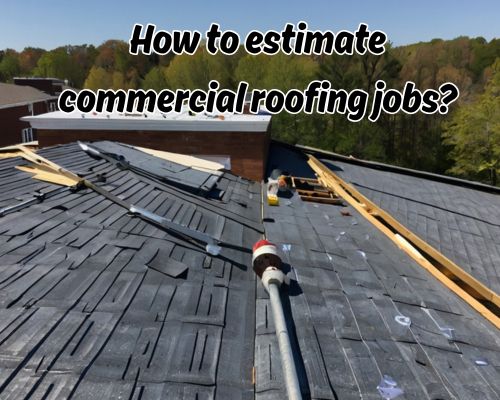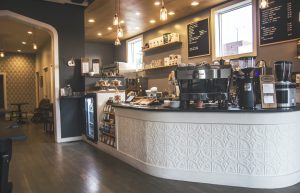- July 11, 2025
- By Rebecca Washington
- Uncategorized
How to Estimate Commercial Roofing Jobs in New Jersey: A Contractor’s Guide to Accurate Bids & Profitability
Estimating commercial roofing jobs can be a complex process, especially in a highly regulated and diverse market like New Jersey, USA. Whether you’re a seasoned roofing contractor or new to the trade, developing accurate estimates is critical—not just for winning jobs, but for ensuring profitability and long-term client satisfaction.

In this guide, we’ll walk through how to estimate commercial roofing jobs with precision, touching on key variables like material selection, labor costs, building codes, overhead, and local market influences.
✅ Why Accurate Estimation Matters in Commercial Roofing
In commercial roofing, underestimating can lead to budget overruns and negative client relationships, while overestimating can cause you to lose bids to competitors. Precision in estimating ensures:
- Realistic project timelines
- Appropriate material ordering
- Profitable margins
- Regulatory compliance
- Enhanced reputation and referrals
🏢 Step-by-Step: How to Estimate Commercial Roofing Jobs in New Jersey
1. Conduct a Comprehensive Site Inspection
Before you crunch numbers, inspect the job site thoroughly:
- Roof size: Measure the roof’s square footage (width × length), adjusting for slope.
- Roof type: Is it flat (low-slope), steep-slope, or a specialty roof (e.g., green or solar)?
- Current roof condition: Are there signs of rot, water damage, or membrane degradation?
- Access and logistics: Consider accessibility, debris removal, crane needs, etc.
🔎 In New Jersey cities like Newark, Trenton, and Jersey City, older industrial buildings often have outdated roof structures that may need reinforcement, impacting cost.
2. Select the Right Roofing System
Different materials come with different costs and lifespans. Some common commercial roofing systems in NJ include:
- TPO (Thermoplastic Polyolefin) – Popular for energy efficiency and cost-effectiveness
- EPDM (Ethylene Propylene Diene Monomer) – Great for flat roofs, especially in colder climates
- Built-up roofing (BUR) – Offers durability with multiple layers of bitumen and gravel
- Metal roofing – Long-lasting and fire-resistant, suitable for large structures
✅ In coastal areas like Atlantic City or Ocean County, roofing materials must also be resistant to high winds and salt corrosion.
3. Factor in Labor Costs
Labor accounts for a significant portion of your estimate. Consider:
- Crew size and experience
- Union vs. non-union labor (especially relevant in Northern NJ)
- Estimated installation time based on material and job complexity
- Prevailing wage laws if you’re bidding on public works projects (check the NJ Department of Labor & Workforce Development for updates)
💡 The average labor rate for commercial roofers in New Jersey hovers between $60 to $90 per hour depending on the region and scope.
4. Include Overhead and Indirect Costs
Don’t overlook general business expenses:
- Insurance (general liability and workers’ comp)
- Equipment rental (e.g., boom lifts, dumpsters)
- Permits and inspection fees
- Administrative costs
In New Jersey, towns like Edison, Paterson, and Hoboken may have different permitting costs. Always contact the local building department to get precise numbers.
5. Account for Material Costs and Waste Factor
Material pricing varies significantly depending on market rates, suppliers, and seasonality. Include:
- Cost per square (1 square = 100 sq ft)
- Adhesives, fasteners, insulation
- Underlayment, flashing, sealants
- Waste factor: 10% to 15% is standard
📌 Tip: Work with local suppliers in Bergen, Monmouth, or Camden County to secure bulk pricing and reduce transportation costs.
6. Evaluate Roof Complexity and Design Features
Special design considerations can increase costs, including:
- HVAC units and penetrations
- Skylights
- Parapet walls
- Drainage systems
- Historical building requirements (especially in Princeton or Morristown)
🧠 Use a roof takeoff software like PlanSwift, RoofSnap, or STACK Estimating to model complex commercial roofs more accurately.
7. Incorporate Contingency Buffer
In New Jersey’s unpredictable climate—harsh winters, coastal storms, and humid summers—unexpected delays or damages are likely. Always include:
- 5-10% contingency
- Delays due to weather
- Permit delays or inspection changes
- Price volatility in roofing materials
⛈️ Weather delays are common in central NJ during late fall and early spring—factor this into your timeline.
8. Local Compliance and Safety Regulations
New Jersey adheres to strict International Building Code (IBC) guidelines and local township rules.
Ensure:
- OSHA compliance
- Fall protection for flat and sloped roofs
- Fire code compliance for torch-down materials
- EPA standards for waste disposal and hazardous materials
🔍 Cities like Elizabeth and Camden often have additional zoning overlays that may affect roof height, reflectivity, or drainage systems.
9. Calculate Your Profit Margin
Once all costs are compiled, apply a markup:
- Standard markup: 10-30%
- Consider competition in your area
- Larger, public, or union jobs may allow for slimmer margins due to higher volume
💰 Commercial roofing contractor in New Jersey typically aim for gross profit margins of 25% to 40%, depending on their business model and specialization.
📊 Example of a Commercial Roofing Estimate (Flat Roof – 10,000 sq ft)
| Cost Item | Description | Total |
|---|---|---|
| Materials | TPO, adhesives, insulation, sealants | $35,000 |
| Labor | 5-person crew for 10 days | $28,000 |
| Equipment | Lifts, scaffolding, tools | $3,500 |
| Permits & Admin | Trenton permitting fees + insurance | $2,200 |
| Overhead & Misc. | Office admin, logistics | $3,000 |
| Contingency (7%) | Weather, price fluctuation | $5,100 |
| Total Before Profit | $76,800 | |
| Profit Margin (30%) | $23,040 | |
| Final Estimate | $99,840 |
📍 Local Insight: Roofing Market Trends in New Jersey
- The commercial roofing market in New Jersey is growing, driven by redevelopment in places like Jersey City, Newark, and Asbury Park.
- Energy-efficient roofing (e.g., cool roofs, solar-ready systems) is in demand due to state tax incentives and NJ Clean Energy Program rebates.
- Post-COVID supply chain disruptions are easing, but material lead times can still be long—schedule accordingly.
🛠️ Tools and Resources
- NJ Business Portal – for licensing and business registration
- NJ Department of Community Affairs (DCA) – for building codes
- National Roofing Contractors Association (NRCA) – for industry best practices
- RSMeans Data – for updated construction cost data
- RoofSnap or EagleView – for aerial measurements
🏁 Final Thoughts: Estimating Commercial Roofs with Confidence
Understanding how to estimate commercial roofing jobs isn’t just about plugging numbers into a calculator. It requires a blend of technical knowledge, local insight, and business acumen. In a competitive region like New Jersey, accurate estimating can set your roofing business apart, help you build long-term relationships, and secure more profitable contracts.
📣 Whether you’re bidding in New Brunswick, Hackensack, or Cherry Hill, always tailor your estimates based on local codes, material availability, labor trends, and building types.




